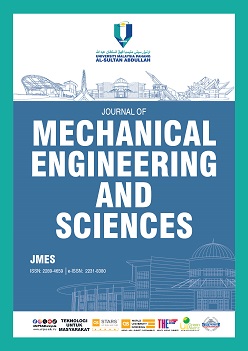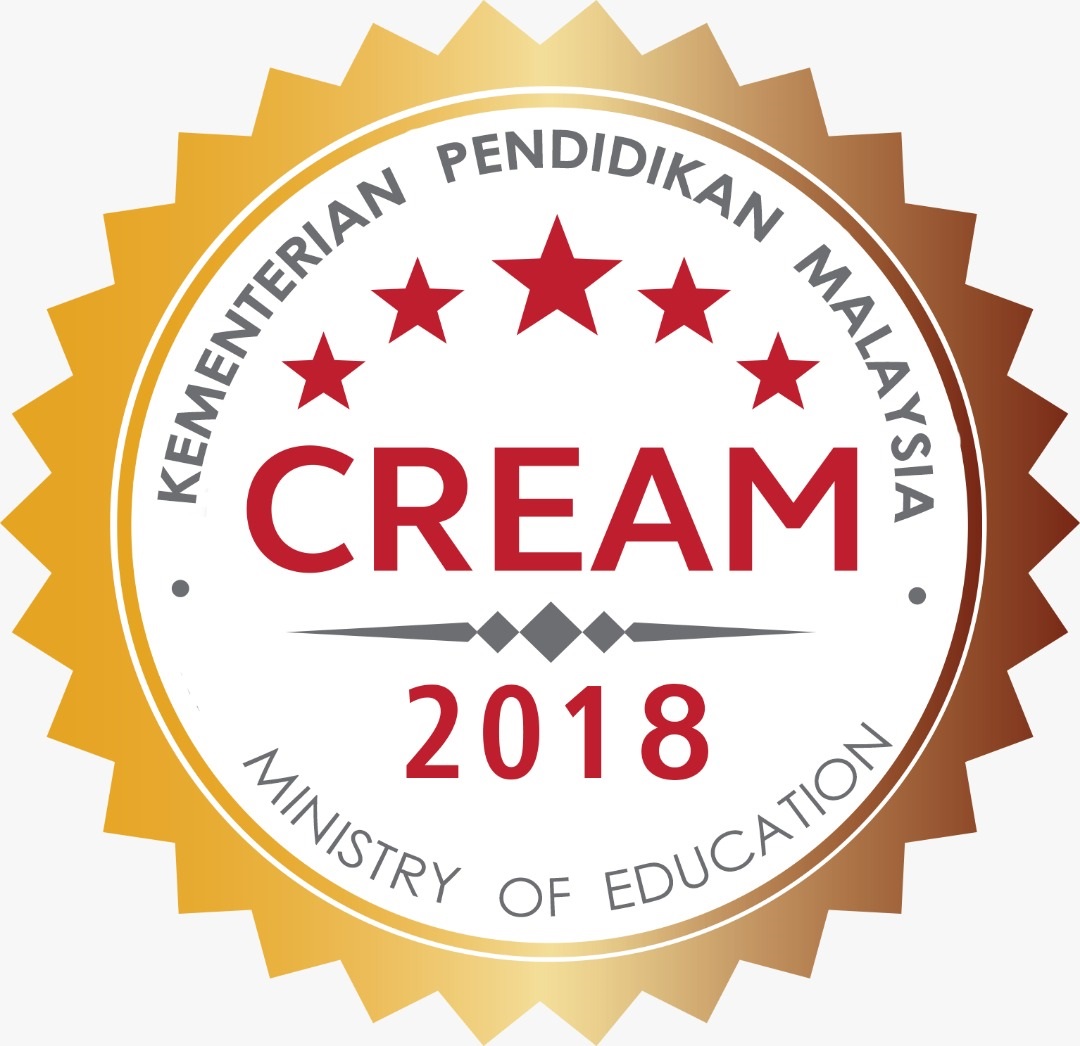Investigation of different compressor speeds to improve the performance of residential air conditioning system using hybrid nanolubricant
DOI:
https://doi.org/10.15282/jmes.19.1.2025.10.0827Keywords:
Hybrid nanolubricant, Compressor speed, Residential Air Conditioning, Coefficient of PerformanceAbstract
Nanoparticles dispersed into lubricants improve the performance of residential air conditioning (RAC) systems. Due to the addictive nature of nanoparticles, friction losses are reduced, and heat transfer is enhanced, leading to a significant increase in the overall efficiency of the RAC system. This study aimed to investigate different compressor speeds utilising hybrid nanolubricant to improve the performance of RAC. A two-step method was used to prepare TiO2 and SiO2 nanoparticles dispersed into polyvinyl ether (PVE) lubricant at a volume concentration of 0.008%. R32 refrigerant was formulated with PVE lubricant at a refrigerant charge of 360 g and compressor speeds of 2520, 2760, and 3000 rpm. The dispersion of both nanoparticles into PVE lubricant at a binary ratio of 50:50 showed excellent stability. The results of the experimental study showed that the coefficient of performance (COP) at each compressor speed of 2520, 2760, and 3000 rpm increased by 8.04%, 4.51%, and 2.46%, respectively. Then, the compressor work decreased by 8.05%, 6.30%, and 4.53%, respectively, decreasing maximum power consumption by 3.56% at a compressor speed of 2520 rpm. Increasing COP at low speeds has implications for the compressor work, which causes the mass flow rate to decrease. At the same time, the refrigerant effect increases, and finally, the COP increases. It is concluded that utilising hybrid nanolubricant in the refrigeration system can improve the overall performance of RAC.
References
[1] B. Dean, J. Dulac, T. Morgan, U. Remme, “The future of cooling: Opportunities for energy-efficient air conditioning,” Technical Report: International Energy Agency, pp. 1-92, 2018.
[2] M. Isaac, D. P. van Vuuren, “Modeling global residential sector energy demand for heating and air conditioning in the context of climate change,” Energy Policy, vol. 37, no. 2, pp. 507-521, 2009.
[3] D. Calleja-Anta, L. Nebot-Andrés, J. Catalán-Gil, D. Sánchez, R. Cabello, R. Llopis, et al., “Thermodynamic screening of alternative refrigerants for R290 and R600a,” Results in Engineering, vol. 5, p. 100081, 2020.
[4] H. Hussein, “Experimental investigation for TiO2 nanoparticles as a lubricant-additive for a compressor of window type air-conditioner system,” Journal of Engineering, vol. 20, no. 2, pp. 62-72, 2014.
[5] M. Akkaya, T. Menlik, A. Sözen, M. Gürü, “Experimental investigation of nanolubricant usage in a cooling system at different nanoparticle concentrations,” Heat Transfer Research, vol. 51, no. 10, pp. 949-965, 2020.
[6] C. S. Jwo, L. Y. Jeng, T. P. Teng, H. Chang, “Effects of nanolubricant on performance of hydrocarbon refrigerant system,” Journal of Vacuum Science & Technology B: Microelectronics and Nanometer Structures Processing, Measurement, and Phenomena, vol. 27, no. 3, pp. 1473-1477, 2009.
[7] A. Nugroho, R. Mamat, J. Xiaoxia, Z. Bo, M. Jamlos, M. Ghazali, et al., “Performance enhancement and optimization of residential air conditioning system in response to the novel FAl2O3-POE nanolubricant adoption,” Heliyon, vol. 9, no. 10, pp. 1-9, 2023.
[8] S. Safril, W. H. Azmi, M. Z. Sharif, N. N. M. Zawawi, “The tribology evaluation on a four-ball tribometer lubricated by Al2O3/PAG nanolubricants,” International Journal of Automotive Mechanical Engineering, vol. 21, no. 1, pp. 11055-11063, 2024.
[9] A. A. Abdel-Rehim, S. Akl, S. Elsoudy, “Investigation of the tribological behavior of mineral lubricant using copper oxide nano additives,” Lubricants, vol. 9, no. 2, p. 16, 2021.
[10] A. S. Al-Janabi, M. Hussin, M. Abdullah, “Stability, thermal conductivity and rheological properties of graphene and MWCNT in nanolubricant using additive surfactants,” Case Studies in Thermal Engineering, vol. 28, p. 101607, 2021.
[11] D. Chen, V. A. Martínez, D. A. Vasco, A. M. Guzmán, “Experimental investigation of viscosity, enhanced thermal conductivity and zeta potential of a TiO2 electrolyte–based nanofluid,” International Communications in Heat Mass Transfer, vol. 118, p. 104840, 2020.
[12] A. Dhanola, H. C. Garg, “Experimental analysis on stability and rheological behaviour of TiO2/canola oil nanolubricants,” Materials Today: Proceedings, vol. 28, pp. 1285-1289, 2020.
[13] D. F. M. Pico, L. R. R. da Silva, O. S. H. Mendoza, E. P. Bandarra Filho, “Experimental study on thermal and tribological performance of diamond nanolubricants applied to a refrigeration system using R32,” International Journal of Heat Mass Transfer, vol. 152, p. 119493, 2020.
[14] N. F. Aljuwayhel, N. Ali, A. M. Bahman, “Experimental evaluation of split air conditioning performance using nanodiamonds particles in compressor polyester lubricant oil,” Applied Thermal Engineering, vol. 231, p. 120961, 2023.
[15] K. Saravanan, R. Vijayan, “Performance of Al2O3/TiO2 nano composite particles in domestic refrigerator,” Journal of Experimental Nanoscience, vol. 13, no. 1, pp. 245-257, 2018.
[16] N. Kumar, P. Kumar, K. Goyal, “A novel approach of using TiO2 and SiO2 nanoparticles and hydrocarbon refrigerant R600a in retrofitted vapour compression refrigeration system for environment protection and system performance enhancement,” Applied Nanoscience, vol. 13, no. 9, pp. 6299-6317, 2023.
[17] S. A. Akinlabi, T. O. Babarinde, D. M. Madyira, O. S. Ogbonna, P. M. Mashinini, “Performance analysis of TiO2 and SiO2 nanolubricant in domestic refrigeration,” in 8th International Conference on Advances in Civil, Structural and Mechanical Engineering, pp. 79-84, 2019.
[18] N. N. M. Zawawi, W. H. Azmi, M. F. Ghazali, H. M. Ali, “Performance of air-conditioning system with different nanoparticle composition ratio of hybrid nanolubricant,” Micromachines, vol. 13, no. 11, p. 1871, 2022.
[19] M. Z. Sharif, W. H. Azmi, A. A. M. Redhwan, R. Mamat, G. Najafi, “Energy saving in automotive air conditioning system performance using SiO2/PAG nanolubricants,” Journal of Thermal Analysis Calorimetry, vol. 135, no. 2, pp. 1285-1297, 2019.
[20] Idemitsu Kosan Co. Ltd., “Characteristics of Daphne Hermetic Oil,” Safety Data Sheet, SDS no. 100000003583 pp. 1-9, 2021.
[21] T. Jia, S. Bi, J. Wu, P. Li, “Solubilities of difluoromethane (R32) in polyol ester, polyvinylether, and polyalkylene glycol base oils at temperatures from 273 K to 351 K,” International Journal of Refrigeration, vol. 111, pp. 63-70, 2020.
[22] ASHRAE, “Designation and safety classification of refrigerants,” ANSI/ASHRAE Standard 34-2010: American Society of Heating, Refrigerating, and Air-Conditioning Engineers, pp. 1-13, 2010.
[23] ISO, “Refrigerants ― Designation and safety classification,” ISO/DIS 817:2014: International Organization for Standardization, pp. 1-15, 2014.
[24] S. Chakraborty, P. K. Panigrahi, “Stability of nanofluid: A review,” Applied Thermal Engineering, vol. 174, p. 115259, 2020.
[25] A. Ghadimi, R. Saidur, H. Metselaar, “A review of nanofluid stability properties and characterization in stationary conditions,” International Journal of Heat Mass Transfer, vol. 54, no. 17-18, pp. 4051-4068, 2011.
[26] S. K. Sharma, S. M. Gupta, “Preparation and evaluation of stable nanofluids for heat transfer application: A review,” Experimental Thermal Fluid Science, vol. 79, pp. 202-212, 2016.
[27] ISO, “Non-ducted air conditioners and heat pumps-testing and rating for performance,” ISO 5151-2017: International Organization for Standardization, pp. 1-15, 2017.
[28] Malaysia Standard, “MS1525 Energy efficiency and use of renewable energy for non-residential buildings–Code of practice,” Department of Standards Malaysia, pp. 1-73, 2014.
[29] M. Y. Taib, A. A. Aziz , A. B. S. Alias, “Performance analysis of a domestic refrigerator,” in National Conference in Mechanical Engineering Research and Postgraduate Students, pp. 582-591, 2010.
[30] M. K. Kamarulzaman, H. Sakinah, K. Kadirgama, D. Ramasamy, M. Samykano, Z. Said, et al., “Improvement in stability and thermophysical properties of CNC-MXene nanolubricant for Tribology application,” Journal of Molecular Liquids, vol. 381, p. 121695, 2023.
[31] F. T. Knabben, A. F. Ronzoni, C. J. Hermes, “Effect of the refrigerant charge, expansion restriction, and compressor speed interactions on the energy performance of household refrigerators,” International Journal of Refrigeration, vol. 130, pp. 347-355, 2021.
[32] Y. Chen, S. Deng, X. Xu, M. Chan, “A study on the operational stability of a refrigeration system having a variable speed compressor,” International Journal of Refrigeration, vol. 31, no. 8, pp. 1368-1374, 2008.
[33] D. S. Adelekan, O. S. Ohunakin, M. H. Oladeinde, G. Jatinder, O. E. Atiba, M. O. Nkiko, et al., “Performance of a domestic refrigerator in varying ambient temperatures, concentrations of TiO2 nanolubricants and R600a refrigerant charges,” Heliyon, vol. 7, no. 2, pp. 1-13, 2021.
[34] D. S. Adelekan, O. S. Ohunakin, J. Gill, O. E. Atiba, I. P. Okokpujie, A. A. Atayero, et al., “Performance of a domestic refrigerator infused with safe charge of R600a refrigerant and various concentrations of TiO2 nanolubricants,” Procedia Manufacturing, vol. 35, pp. 1158-1164, 2019.
[35] M. Z. Sharif, W. H. Azmi, M. F. Ghazali, H. M. Ali, “Performance augmentation of retrofitted sustainable R1234yf in R134a air conditioning system using Al2O3–SiO2 hybrid nanolubricant,” Journal of Thermal Analysis Calorimetry, vol. 148, no. 19, pp. 10203-10215, 2023.
[36] A. Senthilkumar, L. Prabhu, T. Sathish, R. Saravanan, G. A. C. Jeyaseelan, U. Ağbulut, et al., “Enhancement of R600a vapour compression refrigeration system with MWCNT/TiO2 hybrid nano lubricants for net zero emissions building,” Sustainable Energy Technologies Assessments, vol. 56, p. 103055, 2023.
[37] N. N. M. Zawawi, W. H. Azmi, A. H. Hamisa, T. Y. Hendrawati, A. R. M. Aminullah, “Experimental investigation of air-conditioning electrical compressor using binary TiO2–SiO2 polyol-ester nanolubricants,” Case Studies in Thermal Engineering, vol. 54, p. 104045, 2024.
[38] K. V. Raghavulu, N. G. Rasu, S. P. Jani, “Tribology analysis and the effect of molybdenum disulphide lubricant additive on the performance of VCR system,” Advances in Materials Processing Technologies, vol. 9, no. 2, pp. 571-592, 2023.
Downloads
Published
Issue
Section
License
Copyright (c) 2025 The Author(s)

This work is licensed under a Creative Commons Attribution-NonCommercial 4.0 International License.






